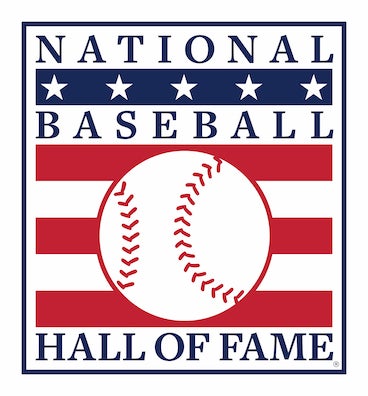Centennial Celebration in Cooperstown included legendary Black baseball squads
More than two decades before the first Black inductee at the National Baseball Hall of Fame, a pair of Black baseball teams faced off against each other in Cooperstown as part of a summer-long celebration commemorating the invention of the game.
As part of the Cooperstown Baseball Centennial festivities held throughout the summer, the Negro National League’s Cuban Stars, sometimes referred to as the New York Cubans, and Mohawk Giants, a semipro squad based in Schenectady, N.Y., 60 miles east of Cooperstown, faced off in an exhibition at Doubleday Field on July 22, 1939.
And though history now shows baseball was not invented in Cooperstown, the ripple effects from that historic game continued to be felt to this day.
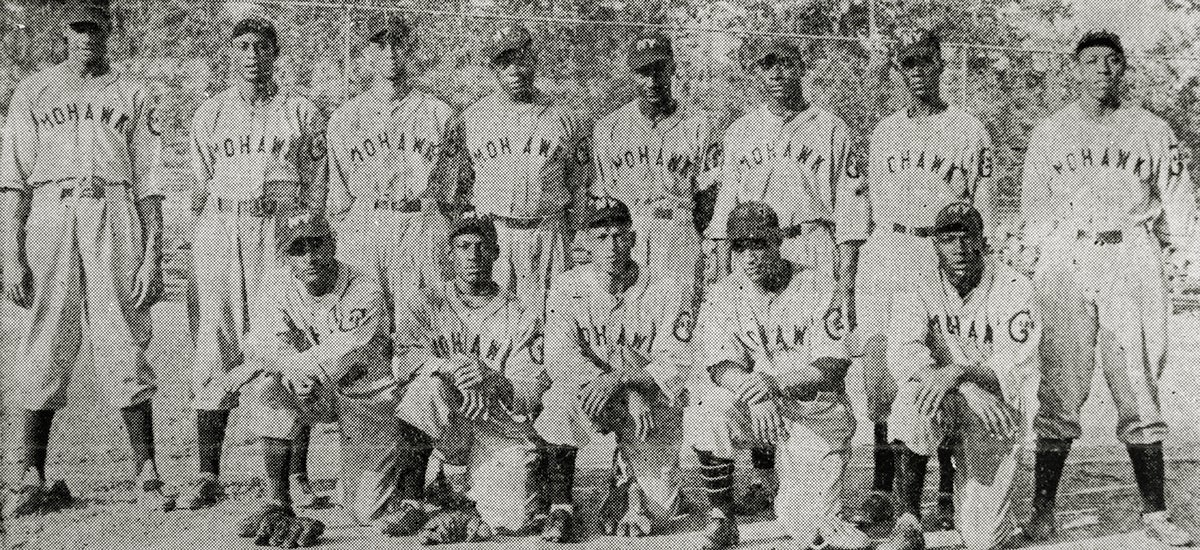
The climax of Firemen’s Day, the Saturday afternoon contest with an estimated crowd of 4,000, was called by Cooperstown’s weekly newspaper, The Otsego Farmer, “one of the most colorful of the season. The stands were dotted with bright uniforms of all colors signifying that many of the thousand or so firemen who were in town for the Cooperstown Firemen’s Field Day were on hand to watch these two colored teams battle it out.”
Cooperstown, settled in 1786 by the father of famed American novelist James Fenimore Cooper, was deemed the “Birthplace of Baseball” in 1907 as the result of findings by the Mills Commission, which was appointed to determine the game’s origin two years earlier. The Commission stated specifically that “the first scheme for playing baseball, according to the best evidence available to date, was devised by Abner Doubleday at Cooperstown, N.Y. in 1839.”
Some 30 years later, plans were underway in the central New York hamlet to host a four-month celebration in the summer of 1939, honoring the game’s 100th anniversary.
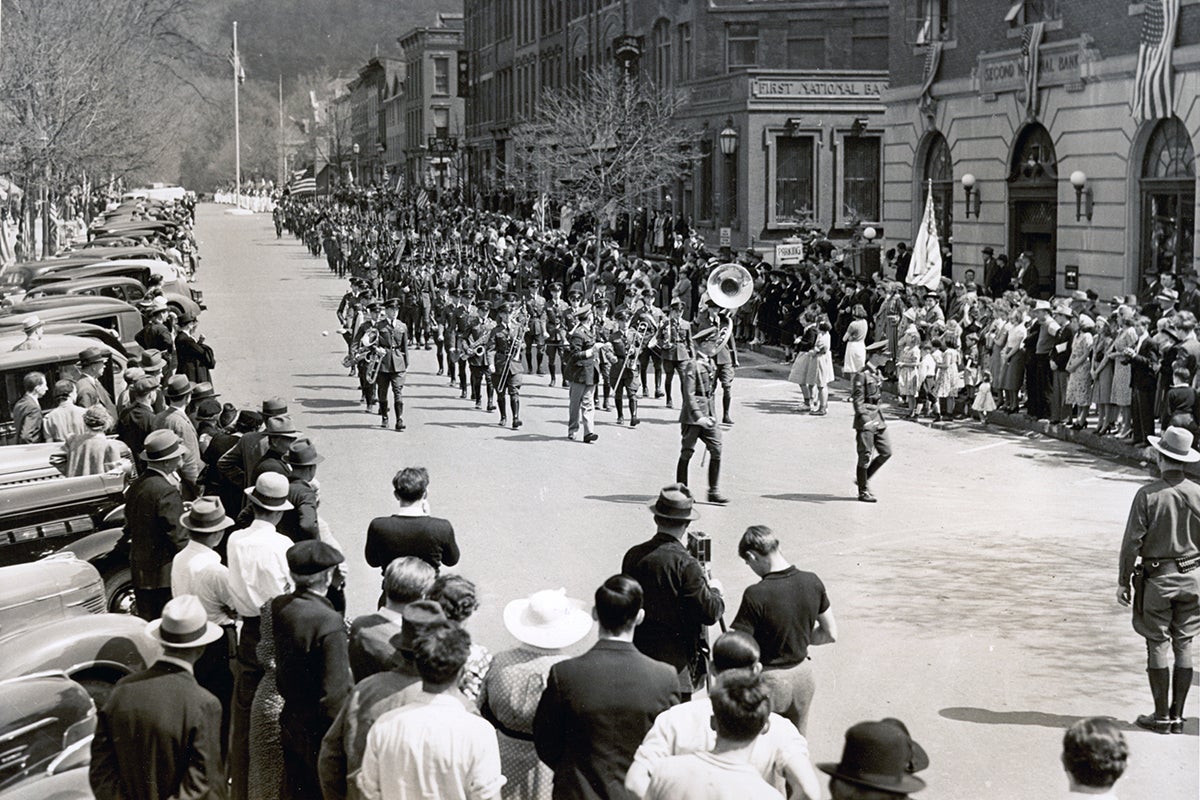
From May through August, Cooperstown was abuzz with baseball activity, with the newly christened Doubleday Field playing host to special high school, college, semipro and minor league contests, as well as exhibitions featuring the New York Yankees and Philadelphia Athletics.
The summer’s crowning moment took place on June 12, a day that not only paid tribute to the game’s best but also opened a 1,200-square foot shrine to the National Pastime that visitors from around the world enjoy to this day.
The Hall of Fame had been in the planning stages for a number of years before its official dedication and first Induction Ceremony. When the day finally came, crowds flocked to the historic village to witness the once-in-a-lifetime events that forever made Cooperstown part of the cultural landscape of our nation.
Perfect weather and a great crowd made Firemen’s Day at the Centennial one of the most successful of the season’s many celebrations. Sponsored by the Cooperstown Fire Department, the day featured a mile-long parade, which started promptly at 2 p.m. and included more than 1,000 firemen in full uniform, numerous pieces of apparatus from the oldest to the most modern, prize-winning floats and a dozen bands.
The lengthy parade, led by Cooperstown Mayor Rowan D. Spraker, Cooperstown Fire Chief A. John Wedderspoon, and two members of the Cooperstown Police Department, started at the National Baseball Hall of Fame and Museum, continued up Main Street toward Chestnut Street, traveled to Elm Street, then Pioneer Street to Church Street and over to River Street, down to Main Street and into the entrance of Doubleday Field.
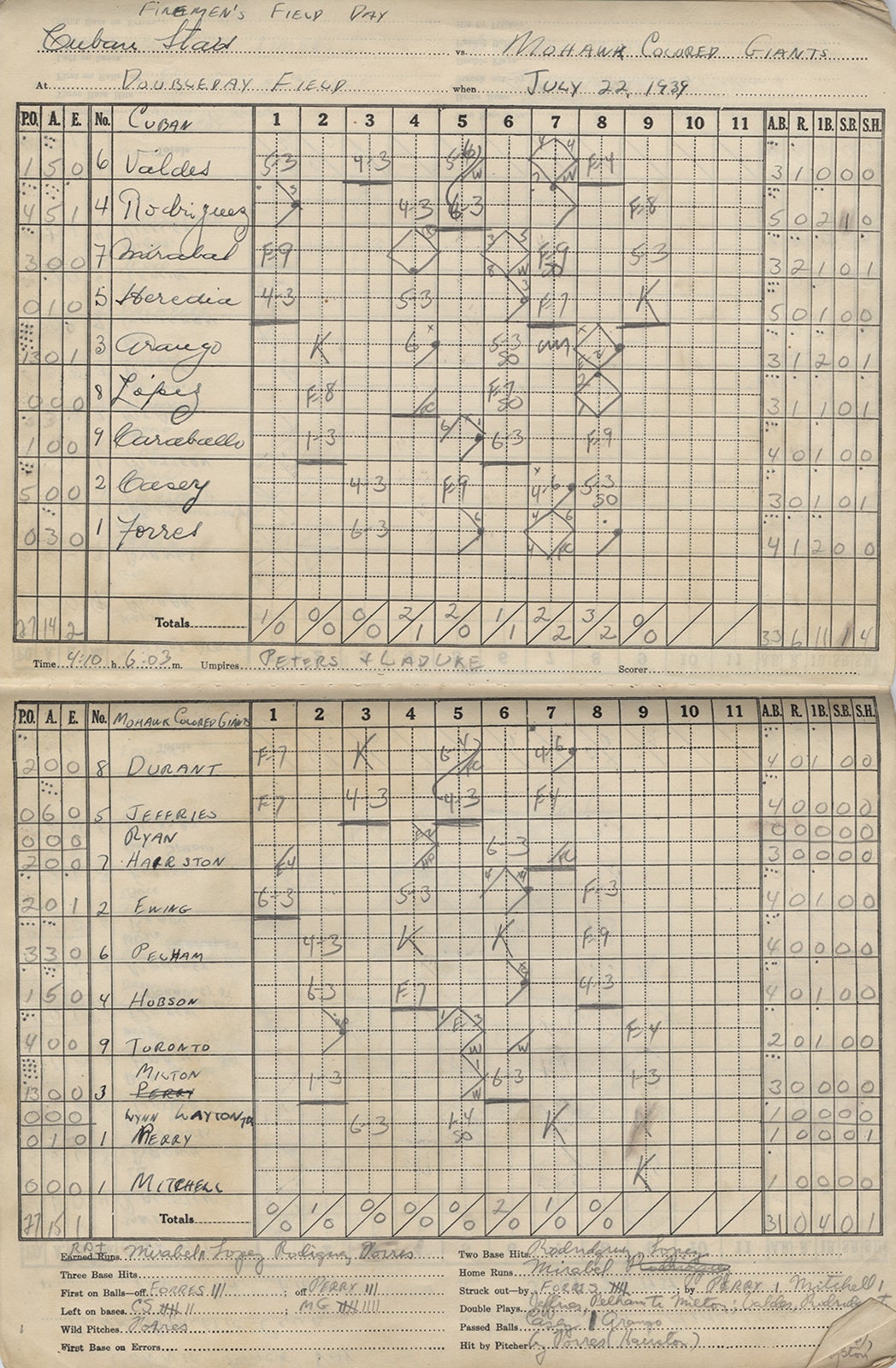
Following the parade, the game at Doubleday Field took place almost eight years before Jackie Robinson broke the modern color barrier with the Brooklyn Dodgers. The contest between the Mohawk Giants and the Cuban Stars was the only Black baseball game on the celebratory schedule.
Robinson, who would play the 1945 season with the Negro American League’s Kansas City Monarchs, would become the first Black member of the National Baseball Hall of Fame in 1962.
“The flashy Cubans have always been a great drawing card in the past years of semipro baseball in this area,” reported one Pennsylvania newspaper in July 1939, “and they are reported to be more colorful than ever with their constant chatter in native dialect, their amazing speed on the basepaths and their all-around skill in fielding and hitting.”
A home run into the center field bleachers by Antonio Mirabal highlighted the Stars’ 6-0 victory. The nine-inning affair clocked in at 1 hour, 53 minutes.
Despite loading the bases in both the fifth and sixth inning, lanky Cuban pitcher Armando Torres shut out the Upstate New York squad, giving up only four hits. The Cubans pounded out 11 safeties, including Mirabel’s homer, which marked the team’s first run in the fourth frame.
The Cubans picked up another run in the sixth when Mirabel, who walked to open the inning, scored on Cando López’s sacrifice fly to left.
Two more were added in the seventh, the first on an Antonio Rodríguez double into the left field corner and the second on Mirabel’s sacrifice fly to right.
The final tallies of the ballgame came in the eighth when Art Mitchell came in to hurl for the Giants. Esterio Caraballo flied out to right field, and Pedro Arango scored after the catch when Buck Ewing dropped the throw in from the outfield. López would later score on a single by Torres that got him across for the final run.
It was reported that there was an unusually high total of 29 infield assists in the game – 14 by Cubans and 15 by Giants.
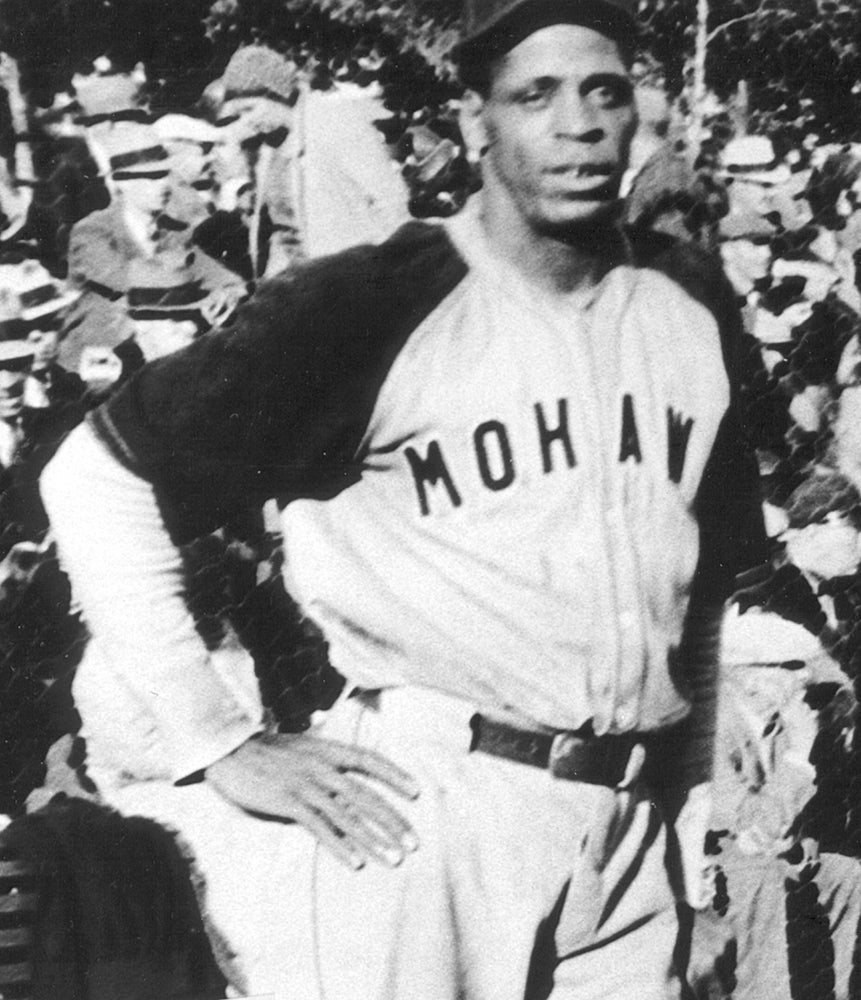
The Cuban Stars, a squad made up of mainly Cuban-born players, were a member of the Negro National League. With a history dating back to 1905, the Stars of this era averaged 160 games per season playing afternoon, twilight and night ball. Among its players on the 1939 roster was Luis Tiant, the lone southpaw hurler on the team and the father of same-named son who won 229 games in the big leagues from 1964 to 1982.
During a barnstorming tour of the country on their own bus, according to one report, the Stars “averaged 30,000 miles per season, used 7,500 gallons of gasoline, 28 barrels of lubricating oil, eat 9,280 meals, use 45 pairs of baseball shoes, 36 baseball uniforms, 24 dozen baseballs, and a dozen other accessories for the game.”
Atop the Mohawk Giants’ 1939 letterhead read: “Greatest Aggregation of Colored Players in the World.” Among the Giants’ top contributors was catcher Buck Ewing – not to be confused with the 19th century catcher with the same name who was elected to the National Baseball Hall of Fame in 1939 – who caught and batted cleanup against the Cubans in Cooperstown. Ewing began his career as a 17-year-old with the NNL’s Chicago American Giants in 1920 and later was the starting backstop for the 1929 Homestead Grays before giving way to an 18-year-old Josh Gibson in 1930. A longtime and beloved member of the Giants, he was buried in Schenectady’s Park View Cemetery after passing away at the age of 76 in 1979.
A member of the Eastern New York State League with Cohoes, Troy, Glens Falls, Kingston, Bennington (VT) and GE Refrigerators, the ’39 Giants were a popular attraction on the road. In addition to the team’s game in Cooperstown, their July schedule included a July 23 matchup at Yankee Stadium versus the NNL’s New York Black Yankees and July 30 doubleheader in Brooklyn against the independent Bushwicks.
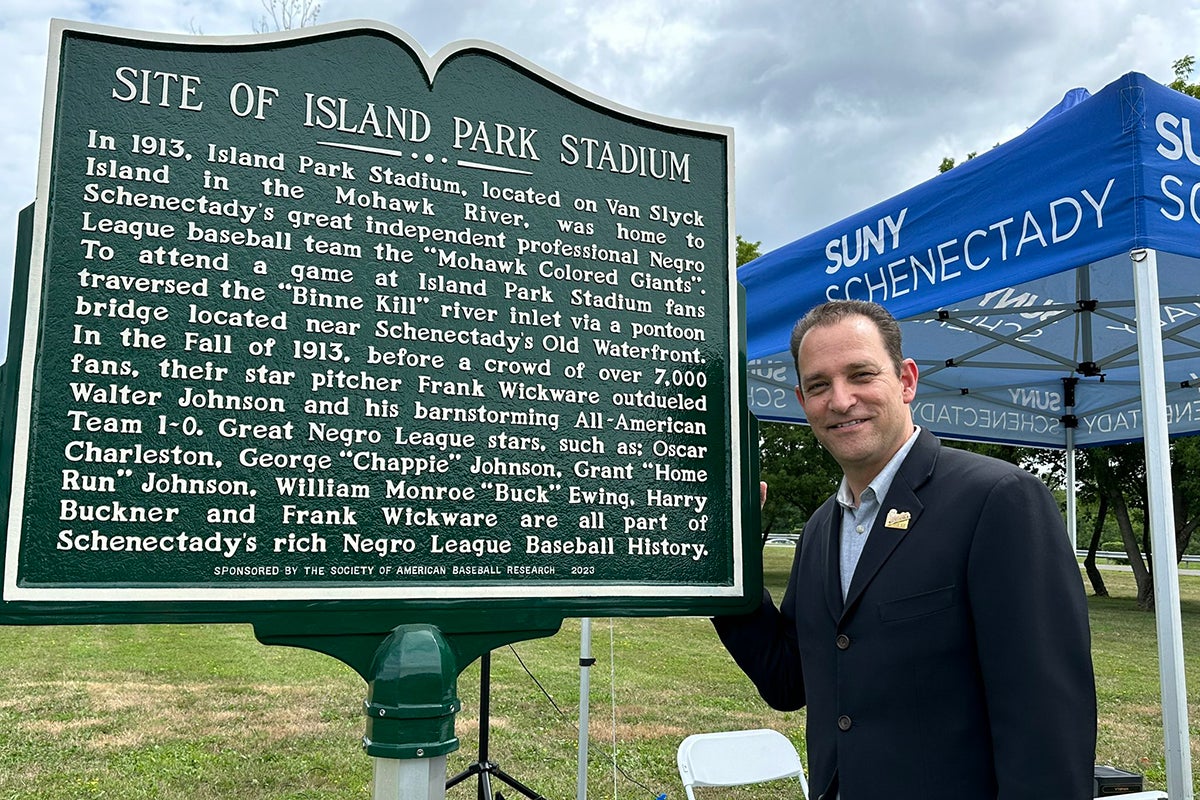
“The National Baseball Hall of Fame and Museum is committed to telling a more complete story of the history of Black baseball, as it impacts us all,” said Hall of Fame President Josh Rawitch, when he spoke at a ceremony placing a historical marker commemorating the Mohawk Giants baseball team in Schenectady on July 25, 2024. “We were very proud to recently open The Souls of the Game: Voices of Black Baseball as a way to accomplish that goal and any opportunity we have to share what we have learned with others is valuable…I hope that many baseball fans from the area will pay a visit to Cooperstown in the future to learn more about this important subject.
“They never got the chance to show what they can do. I think it’s part of what we’re trying to, not fix, but go back and look at and make sure they get their due, just like all of the players that are known through major league baseball.”
Bill Francis is the senior research and writing specialist at the National Baseball Hall of Fame and Museum
